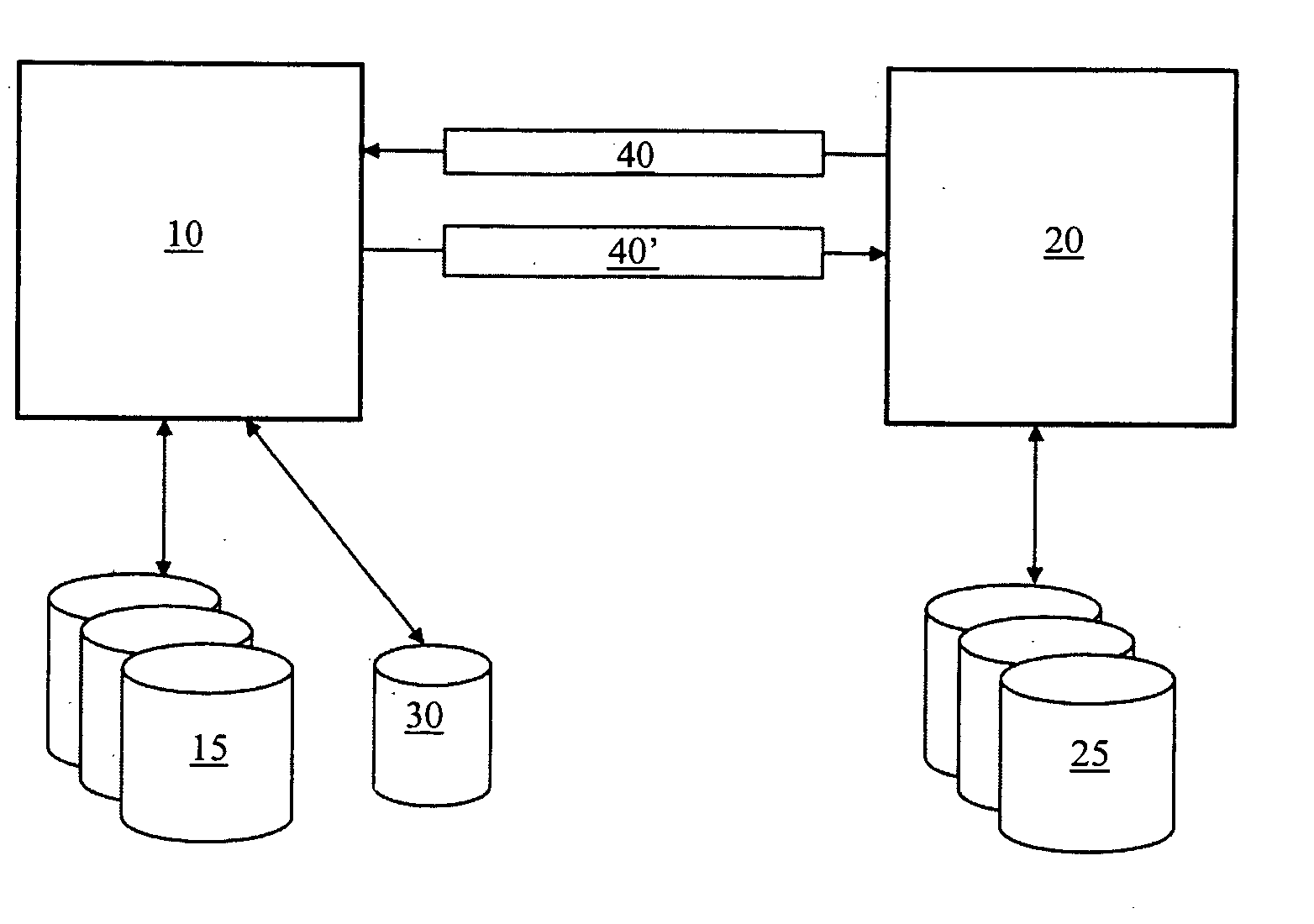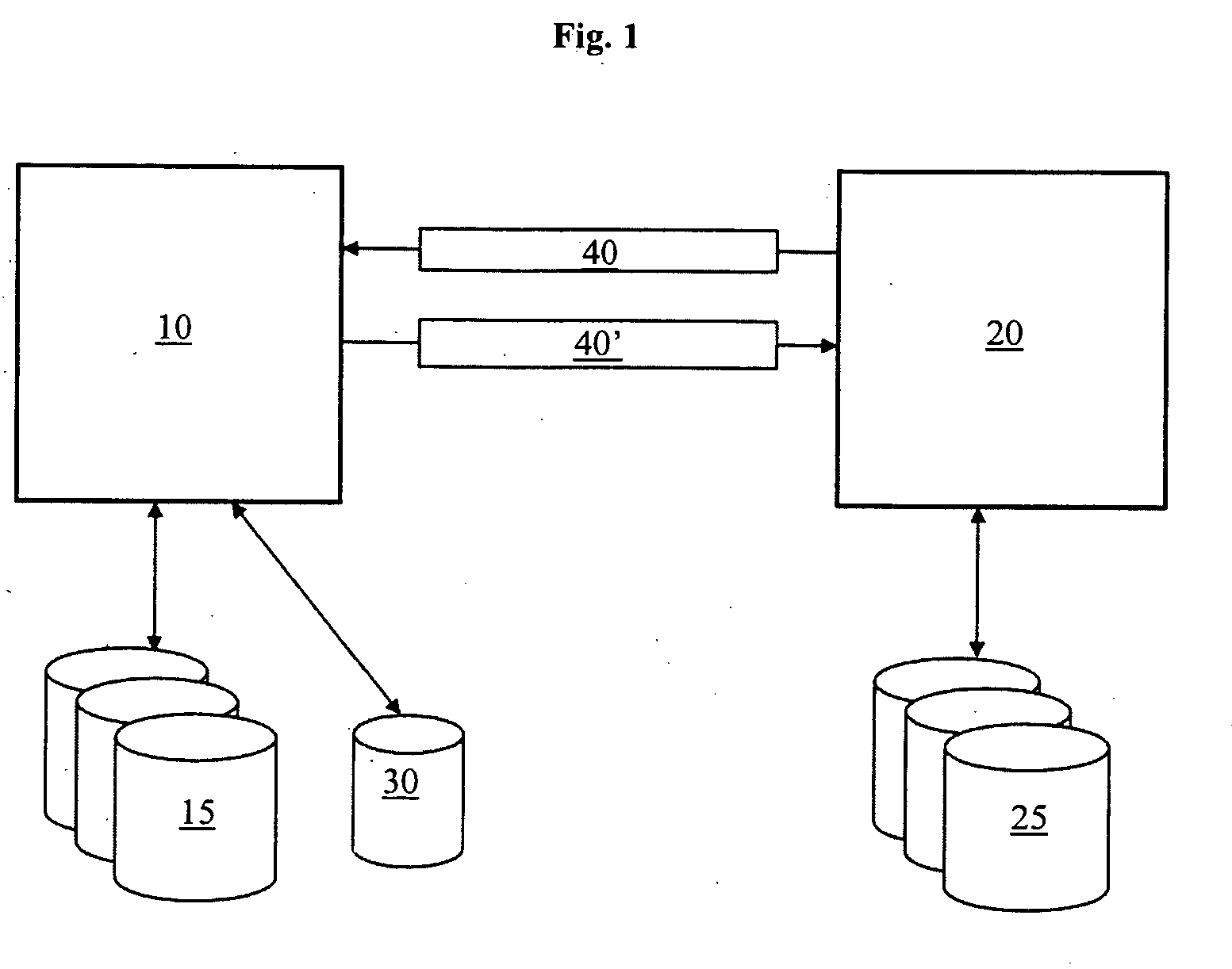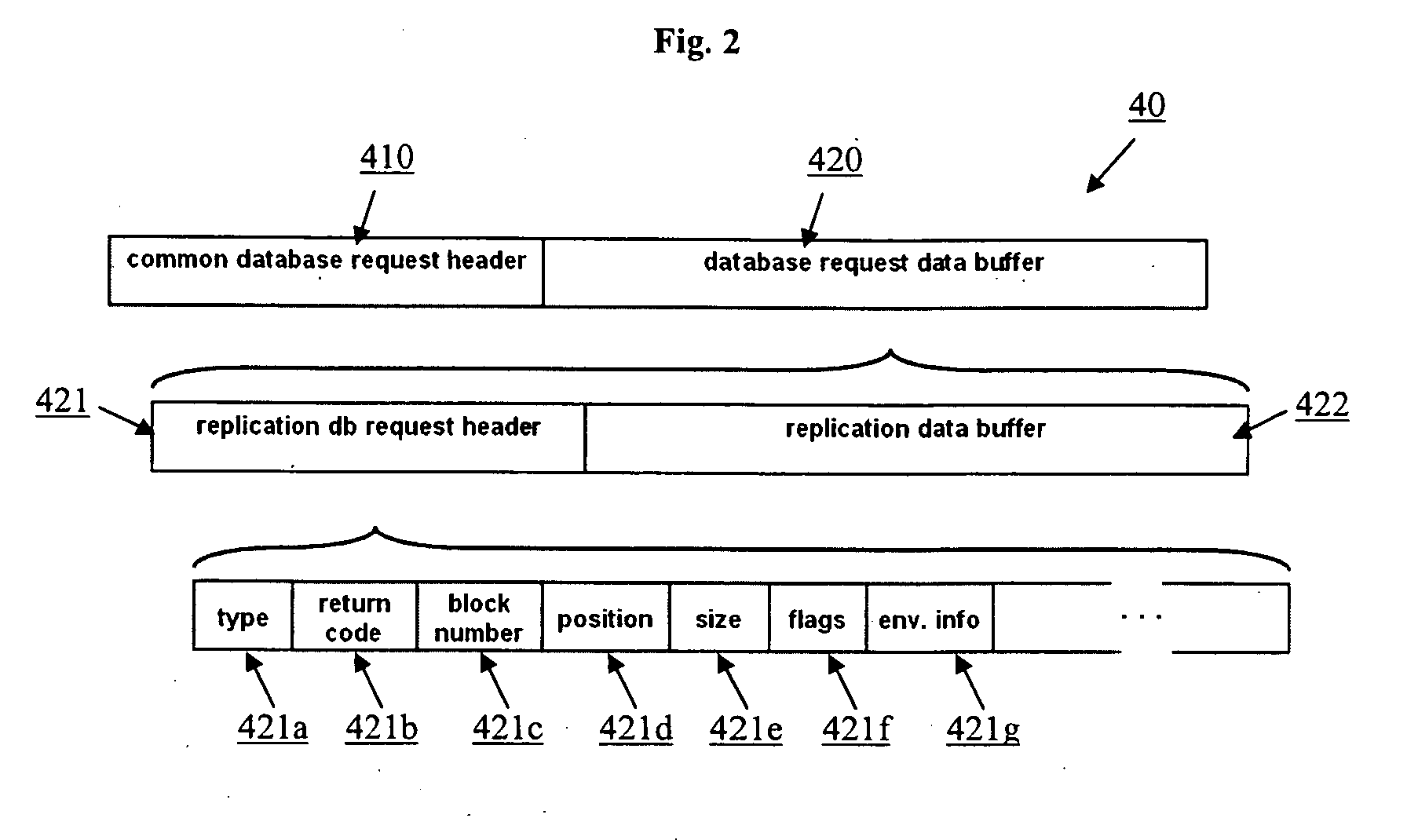Database server, replication server and method for replicating data of a database server by at least one replication server
a replication server and database server technology, applied in the field of database servers, can solve the problems of reducing the overall performance few replication servers can be provided in the prior art without negatively affecting the efficiency of the primary database server, so as to reduce the required network bandwidth as well as the latency of the at least one replication server, and achieve the effect of efficient transferring portions and zero loss of committed transactions
- Summary
- Abstract
- Description
- Claims
- Application Information
AI Technical Summary
Benefits of technology
Problems solved by technology
Method used
Image
Examples
Embodiment Construction
[0048]In the following, a presently preferred embodiment of the invention is described with respect to FIG. 1. As can be seen, a database server 10 is in communication with one or more primary databases 15 and a redo log 30. Furthermore, a replication server 20 is in communication with a replication database 25. Apparently, FIG. 1 only shows a simplified example, whereas more complex scenarios may comprise a plurality of replication servers 20.
[0049]Replication of data of the primary database 15 controlled by the database server 10 is supported by providing special database request types to transport replication data. To this end, the replication server 20 sets up a database request 40 with information about replication data to be retrieved, sends the database request 40 to the database server 10 and preferably waits for a response. When the database server 10 receives the database request 40, the database request 40 may be scheduled to be processed. The database server 10 processes...
PUM
 Login to View More
Login to View More Abstract
Description
Claims
Application Information
 Login to View More
Login to View More - R&D
- Intellectual Property
- Life Sciences
- Materials
- Tech Scout
- Unparalleled Data Quality
- Higher Quality Content
- 60% Fewer Hallucinations
Browse by: Latest US Patents, China's latest patents, Technical Efficacy Thesaurus, Application Domain, Technology Topic, Popular Technical Reports.
© 2025 PatSnap. All rights reserved.Legal|Privacy policy|Modern Slavery Act Transparency Statement|Sitemap|About US| Contact US: help@patsnap.com



